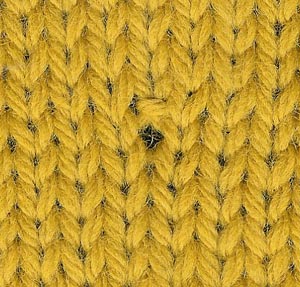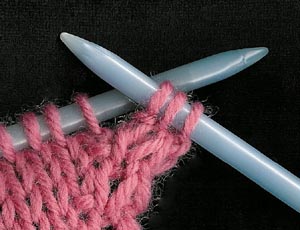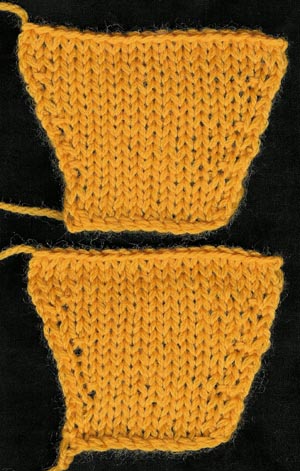11: Shaping
(cont.)
Increasing
To work an increase, the usual method is to knit twice into the
same stitch. Knit into the front of the stitch and then, before
slipping the knitted stitch off the left needle, twist the right
needle point to the back, knit again into the back of the same
stitch and then slip both stitches off the left needle to the right
needle [pic 8].

8: An increase made by knitting twice
into one stitch.
The base of the added stitch shows as a
horizontal bar on the left side of the original stitch, now on the
right needle. The bar is always on the left side. That’s just the
way stitches fall [pic 9].

9: The increase shows as a horizontal
bar on the left of the stitch worked as an increase.
The position of the bar becomes important
when working shapings at both ends of a row. So that the shaping
will match on either side of a seam, the bar must be placed the same
number of stitches from each edge. At the beginning of a row, if you
knit one stitch and then increase into the second stitch, you will
have two stitches, and then the bar. At the end of the row, if you
increase into the second last stitch, the bar will occur only one
stitch from the edge. To make the bar fall in the matching position
at each end of a row, increase into the second stitch from the
beginning and the third last stitch from the end of a row [pic 10].

10: Top: Increases worked two
stitches in from each edge do not balance properly. The end of the
row has only one stitch after the bar.
Bottom: Work the increase on the third last stitch of any row so
that the bars fall in a matching position.
NEXT
PAGE >> chapter
page: 1 | 2
| 3 | 4 | 5
| 6
|